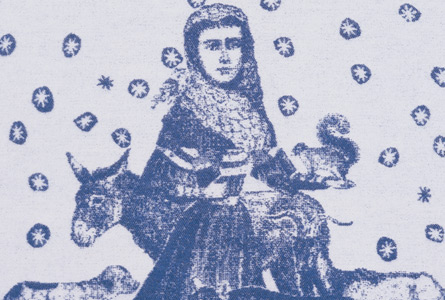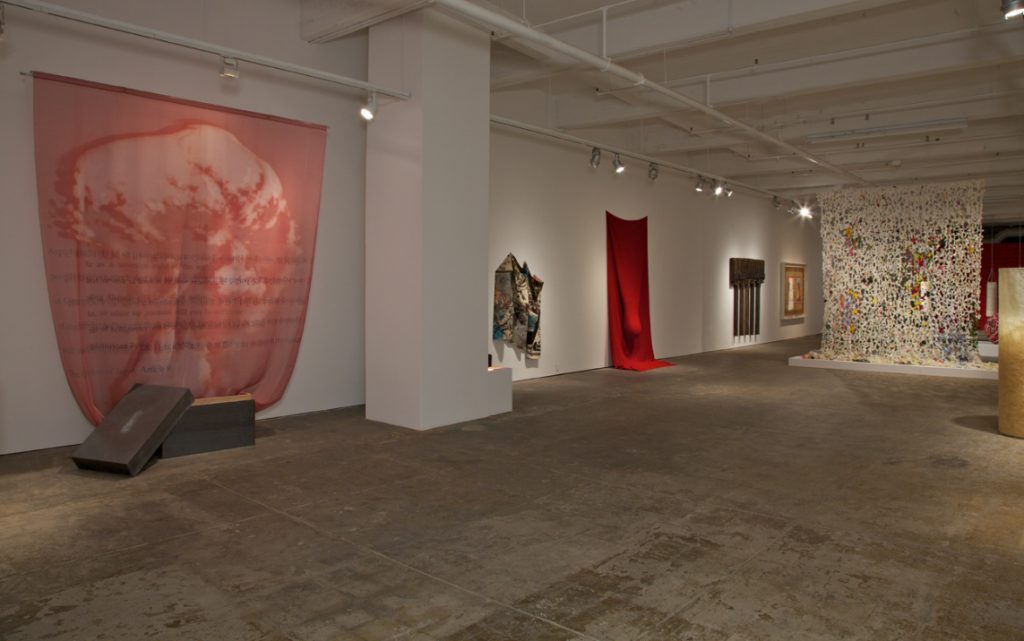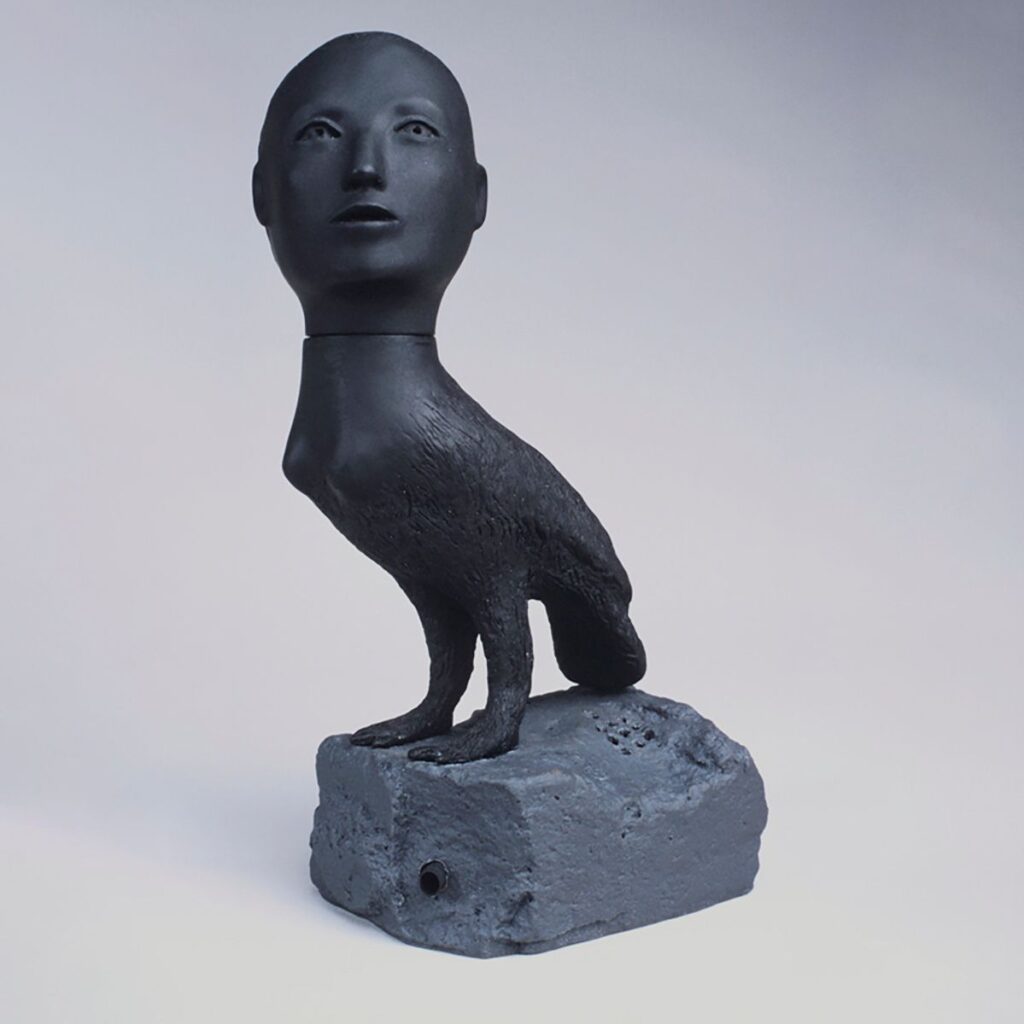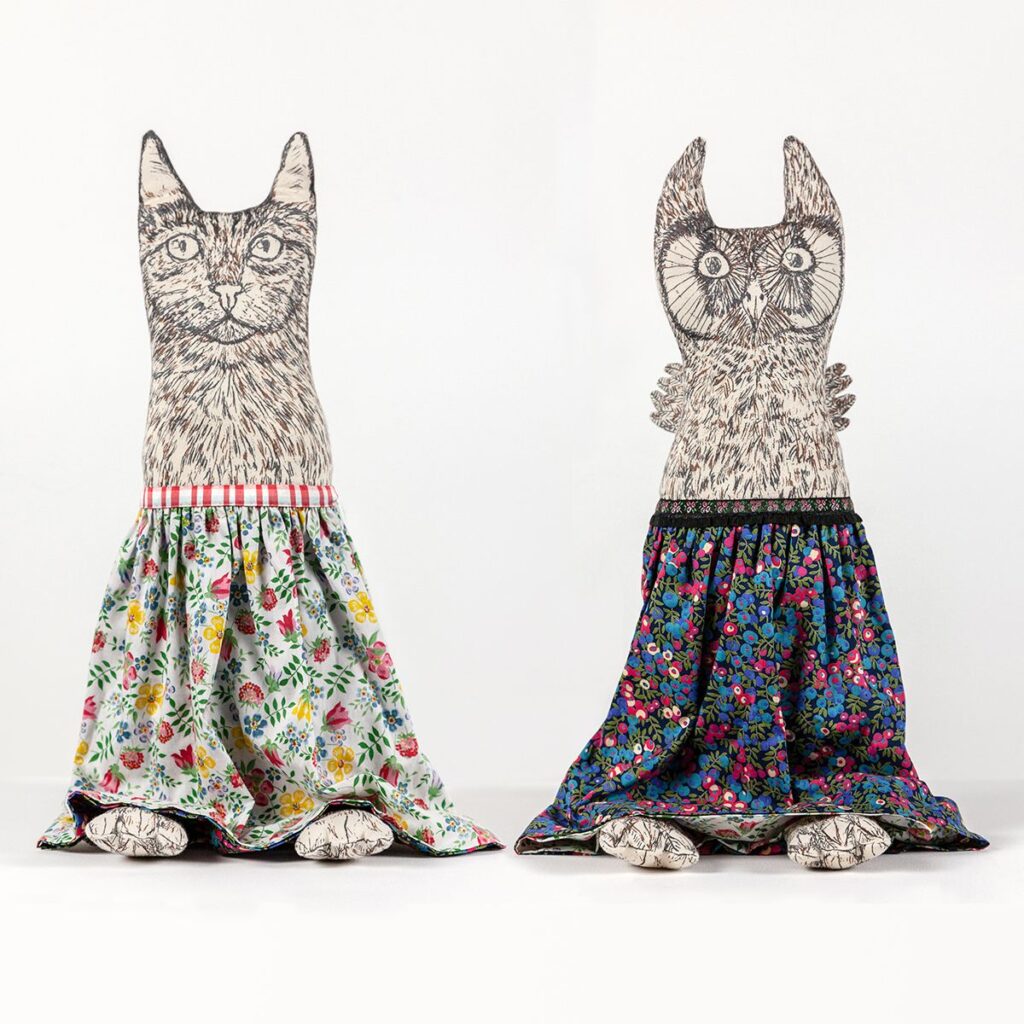Kiki Smith approached her residency at FWM as an opportunity to explore a traditional textile form, the blanket. Drawing on the well-established tradition of American weaving on Jacquard looms, Smith designed a wool coverlet, which FWM fabricated in conjunction with a small weaving company in western Pennsylvania. The Jacquard loom produced a double-woven blanket in which the imagery and colors pictured on the front are seen in reverse on the back. After weaving, the blankets were put through a fulling mill—an industrial device equipped with hundreds of needles that grab and fluff the fibers—to soften the coverlets and slightly blur the imagery.
Titled Familiars, Smith’s coverlet depicts a benevolent scene of a woman surrounded by a menagerie of animals with snowflakes or stars dotting the sky above. Reminiscent of a fable, the scene is repeated twice on the blanket—a technical limitation of the weaving process that was used by Smith to accentuate the reflective nature of the text woven above the women and their flocks. “I see the moon, and the moon sees me” are the words from a nursery rhyme. The idea of reflection, or doubling, also highlights a fable’s inherent “function” as a mirror image of behavior, from which one can learn something new. The word “Familiar” is woven below the scene, a reference to a familiar as a spirit, often embodied in an animal, that extends protective powers over a person. Smith has said that she was drawn to the idea of these animals as a concert of witches, acting as a conduit to the spirit world. The subject of animals has been a consistent theme in Smith’s work since the mid-1990s when she began moving away from the body as the sole subject of her artistic explorations.
When asked about her earliest artwork, Kiki Smith often describes a set of bedsheets and pillowcases she made of muslin and then decorated with painted arms, legs, eyes, and mouths. In many ways, Smith built her work upon the relationship between personal experience and external realities. Continuously examining the human condition, she has maintained an interest in functional yet decorative objects for the home meant to infuse the intimacy of domestic life with the larger themes of her work.
Smith’s 2002–2023 FWM exhibition, Homework, consisted of several domestic vignettes, throughout which Smith displayed functional objects performing their practical duties. Seemingly normal, the imagery and form of these domestic objects play with the viewer’s expectations. The works evoke a sense of the familiar and the unfamiliar, serving mundane purposes but taking unusual and often extraordinary forms. For this exhibition, Smith created three works in collaboration with FWM: Owl and Pussycat (2002), Lamb Bank (2002), and Familiars (2001).
In keeping with Smith’s interest in folklore, the concept of the Owl and Pussycat flip doll draws from the classic nursery rhyme by Edward Lear and has a cat on one end, and when the skirt flips, an owl with little wings appears. Each flip doll is unique, made of hand-sewn screen-printed fabric designed by Kiki Smith and Liberty Print. For Smith, dolls and puppets have significant connections to folklore and mythology, conjuring thoughts of childhood stories and mixing personal memories with recognized fables and archetypal myths.





